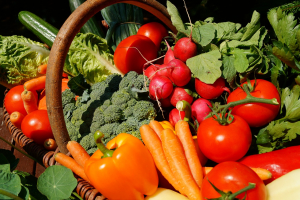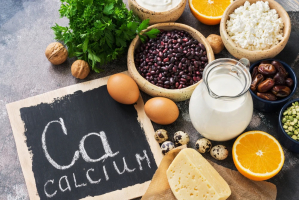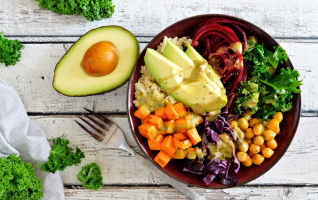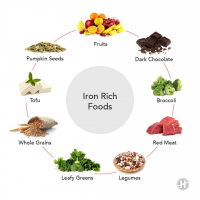Top 10 Best Foods High in Vitamin K2
Vitamin K is a fat-soluble substance that bodies require for purposes such as good blood coagulation. Vitamin K2 (menaquinone) is one of the most ... read more...underappreciated but vital vitamins for human health. According to recent studies, it may be the ignored vitamin in the link between nutrition and numerous chronic diseases. So, let's with Toplist make a list of the Best Foods High in Vitamin K2!
-
Natto is a traditional Japanese cuisine produced from fermented whole soybeans with Bacillus subtilis var. It is frequently served for breakfast, usually with rice. It is typically served with karashi mustard, soy or tare sauce, and Japanese bunching onion. Natto is especially popular in Japan's eastern areas, notably Kant, Tohoku, and Hokkaido. Natto is typically considered an acquired taste due to its pungent odor, flavor, and sticky, slimy texture.
Natto is one of the greatest sources of vitamin K2 since it contains the most vitamin K2. One tablespoon of Natto provides 150 micrograms of vitamin K2, which is roughly twice the recommended daily allowance. It is derived from fermented soybean, which develops a sticky web-like structure. It is a foul-smelling meal that is commonly offered at Japanese breakfast. This traditional Japanese dish has three different kinds of vitamin K2. It is also high in antioxidants and protein.
Natto is lower in antinutrients and higher in probiotics than non-fermented soybeans. This helps your body absorb nutrients more quickly and reduces unpleasant stomach symptoms. Natto is high in calcium and vitamin K2, both of which help to build stronger, healthier bones. Natto is high in fiber, probiotics, vitamin K2, and the enzyme nattokinase. This combination may help lower cholesterol and blood pressure, lowering the risk of heart disease.

Natto 
Natto -
Eels are ray-finned fish of the Anguilliformes order. Eels are long-bodied fish that range in size from 5 cm for the one-jawed eel to 4 m for the slender giant moray. Other eel-shaped fish with the name "eel" include electric eels, spiny eels, swamp eels, and deep-sea spiny eels. These other clades, on the other hand, acquired their eel-like morphologies independently of actual eels. Most eels live in the ocean's shallow waters, burrowing into the sand, mud, or amid rocks.
Not only is eel a delicious treat, but it also has numerous health benefits. Though the majority of vitamin K2 sources are animal-based, eel is a seafood option. A 100-gram meal of eel has 63 micrograms, which is enough to meet your daily requirement.
To begin, it is high in calcium, magnesium, potassium, selenium, manganese, zinc, and iron. For those watching their carbohydrate intake, the eel has no sugar, is low in salt, and is high in phosphorus. It is high in omega-3 fatty acids and protein, which help to preserve hearts and bones, improve blood pressure, lower cholesterol, and lower the risk of diabetes and arthritis. EPA, one of those omega-3 acids, is also proven to promote good skin. The excess of vitamin A also aids in the fight against wrinkles. DHA, another form of omega-3 fatty acid found in it, helps brain function.

Eel 
Eel -
Cheese is a dairy product that is made in a variety of flavors, textures, and shapes by coagulating the milk protein casein. It is made out of proteins and fat from milk, mainly cow, buffalo, goat, or sheep milk. During the manufacturing process, the milk is often acidified, and enzymes such as rennet or bacterial enzymes with similar activity are added to cause the casein to coagulate. After separating the solid curds from the liquid whey, they are pressed into the finished cheese. Aromatic mold can be found on the cheese's rind, outer layer, or throughout.
Cheese is a good source of vitamin K2, as well as calcium, vitamin A, and protein. They are, however, high in saturated fats and calories, so limit your intake. The amount of vitamin K2 in cheese varies by kind and increases with age. The most vitamin K2-rich cheeses per 50-gram serving are Munster (50 micrograms), Camembert (34 micrograms), Edam and aged Gouda (32 micrograms), and cheddar (12 micrograms).
Cheese is high in calcium, which is important for bone and tooth health, blood coagulation, wound healing, and maintaining normal blood pressure. Men and women between the ages of 19 and 50 should ingest 1,000 mg of calcium every day. One ounce of cheddar cheese contains 20% of this daily requirement.

Cheese 
Cheese -
Beef liver is a type of cow organ meat. It is also known as offal or variety meats by some individuals. These are the internal organs and entrails of animals that a butcher may discard after preparing them. The heart, kidneys, and tongue are also examples of offal. Some cultures do not consume offal, whilst others do and consider it a delicacy. Beef liver, like the human liver, is a crucial organ for the cow and serves a variety of tasks. Some of these critical processes include metabolism, detoxification, and vitamin and mineral storage, which is why the liver is so nutrient-packed.
Animal livers have the highest protein content and the best amino acid profile of any organ meat. They are also high in vitamin A and B vitamins. Beef liver is one of the most nutritious meat products available, having all of your daily requirements for vitamins A, riboflavin, folate, and copper. A 100-gram meal also contains more than 11 micrograms of vitamin K2, making it the best source of the vitamin in meat.
Indeed, some individuals may regard beef liver as a superfood due to its nutritional properties. Beef liver is nutrient-dense and offers a number of health benefits. Beef liver, for example, is high in minerals including zinc, iron, phosphorus, selenium, and copper, as well as a wide range of vitamins.

Beef Liver 
Beef Liver -
The chicken is domesticated junglefowl with characteristics of wild Southeastern Asian species such as the grey and Ceylon junglefowl. With a population of 23.7 billion as of 2018, chickens are one of the most prevalent and widespread domestic animals. Humans today maintain chickens primarily for food (eating both meat and eggs) and as pets.
Chicken has numerous health benefits, but different portions and preparation methods influence how nutritious your chicken-based meal is. If you don't like organ foods like liver, choose chicken for your vitamin K2. Chicken contains five to ten times the vitamin K2 level of beef or pork, with 10 micrograms per 100-gram serving.
Chicken's lean protein is an excellent source of amino acids. Amino acids are used by bodies to generate muscular tissue, which is especially important as humans age. Higher protein consumption has also been found in studies to help preserve bone mineral density. Consuming chicken can assist to create stronger muscles and promote healthier bones, lowering the chance of injuries and disorders like osteoporosis. Furthermore, being a high-protein food, chicken can aid with weight management and lower the risk of heart disease.

Chicken meat 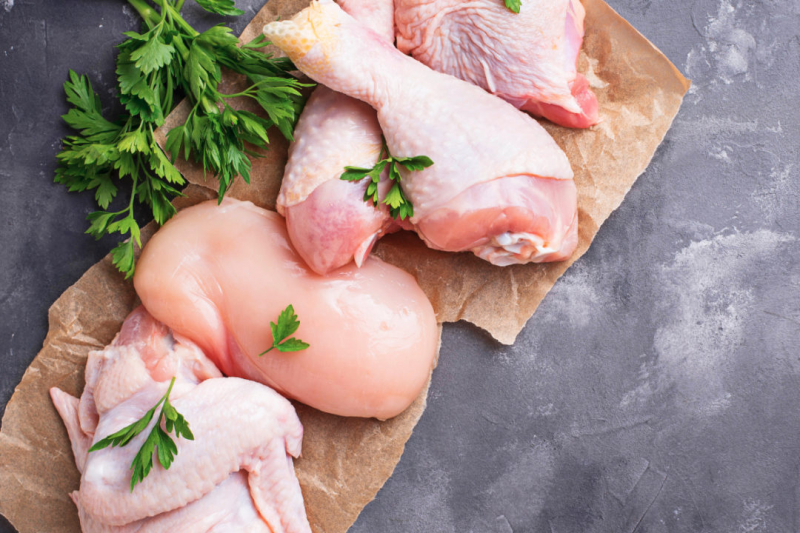
Chicken meat -
The yolk (also known as the vitellus) is the nutrient-bearing component of the egg whose principal job is to offer sustenance for the embryo's development in animals that produce eggs. Egg yolks are the yellow portion of an egg found in the center. They are heavy in cholesterol but also include a variety of essential nutrients and health advantages.
Eggs are a low-cost, nutrient-dense item that is simple to get and cook, making them a good dietary mainstay for many people around the world. Vitamin K2 levels in egg yolks range from 67 to 192 micrograms. However, the amount depends on what the hen eats. Most chicken feed is enriched with vitamin K nowadays, and this substance is passed on to the egg. However, poultry given maize or soy-based diets are more susceptible to vitamin K deficiency.
Consuming egg yolk may reduce the risk of gastrointestinal upset. Eating the egg white and yolk together in a complete egg gives the proper protein, fat, and calorie balance. Most people feel fuller and more pleased after eating eggs in meals because of this combination. The minerals and proteins in egg yolk may provide various benefits, including a lower risk of gastrointestinal upset, a stronger immune system, reducing your blood pressure...
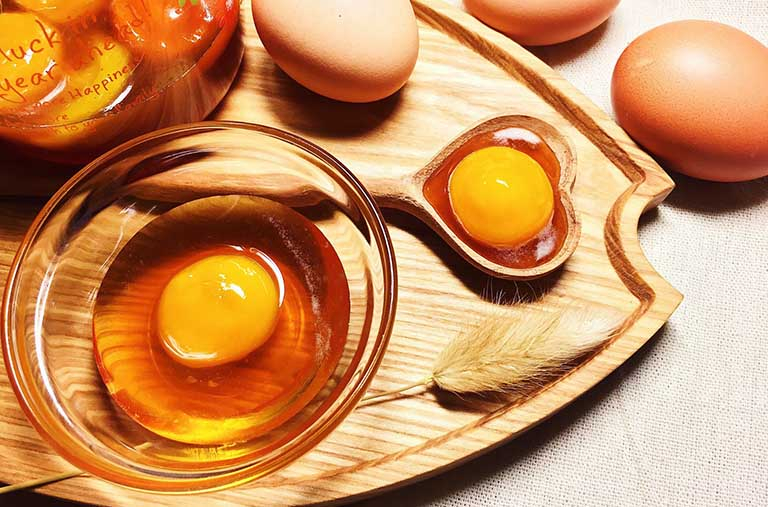
Egg yolks 
Egg yolks -
Foie Gras is a delicacy made from a duck or goose's liver. In French cuisine, foie gras is a popular and well-known delicacy. Unlike conventional duck or goose liver, its flavor is described as creamy, buttery, and delicate. Foie gras can be purchased whole or made into mousse, parfait, or pâté, and it can even be served as a complement to another dish, like steak. According to French legislation, foie gras is part of France's protected cultural and gastronomical heritage.
Although heavy in fat, foie gras is also dense in vitamins and minerals. A 100g serving of foie gras is predicted to provide 396 mcg of vitamin K2. However, because this item contains a lot of fat (12g), it is heavy in calories. The trick is that, although high in calories, foie gras is nonetheless nutritious. A modest, moderate piece is actually excellent for you, just as a large amount of chocolate is not good for you and a large amount of foie gras will have you looking and feeling like a fat duck in no time. The secret to foie gras nutrition is that the lipids found in the liver are beneficial fats called mono- and poly-unsaturated fats. They work on the body by lowering bad cholesterol levels and increasing good cholesterol levels.
Remember that a diet must be balanced and that the calories in foie gras do add up. So, enjoy your foie gras bloc, mousse, or lobe while paying attention to quantities and portions to avoid overdoing it on the foie gras calories, and accompany it with a glass of antioxidant-rich French wine.

Foie gras 
Foie gras -
Bacon is a salt-cured pork product manufactured from various cuts, most commonly the belly or less fatty sections of the back. It is consumed as a side dish (especially for breakfast), as the main item (for example, the bacon, lettuce, and tomato sandwich), or as a flavoring or accent (as in bacon bits in a salad). Bacon is also used for barding and larding roasts, particularly game meats such as venison and pheasant, and it can be used to insulate or flavor roast joints by being laid onto the flesh.
Bacon is high in nutrients. This meat contains 5.6mcg vitamin K2 per 100g serving. It also has 16.5g of protein, 9mg of calcium, 178mg of phosphorus, and a variety of other minerals. Bacon contains certain important micronutrients, such as potassium, which promotes bone health, heart health, and muscle strength, and lowers blood pressure.
Bacon also contains more than half of the RDA for two key minerals: selenium and phosphorus. These minerals are important antioxidants and bone builders. This cured pork is particularly high in B vitamins, including B1, B2, B3, B12, B5, and B6, which help with everything from cellular production to cognitive function and energy levels.

Bacon 
Bacon -
Butter is a dairy product created from churned cream's fat and protein components. At room temperature, it is a semi-solid emulsion made up of approximately 80% butterfat. It is used as a spread at room temperature, as a condiment when melted, and as a fat in baking, sauce-making, pan-frying, and other cooking techniques. It is prepared by separating the fat globules from the buttermilk by churning milk or cream. It is normally pale yellow in appearance but can range from deep yellow to practically white. Its natural, unaltered hue is determined by the nutrition and genetics of the source animal, but the commercial manufacturing process sometimes alters the color with food colorings such as annatto or carotene.
A teaspoon of butter contains 2.1 micrograms of vitamin K2. That same tablespoon, however, has approximately 100 calories and 11 grams of fat, so keep your servings small to prevent potential health problems and unnecessary weight gain. Butter, in moderation, can be a nutritious part of your diet.
It's high in minerals like bone-building calcium and contains chemicals that have been linked to a lower risk of obesity. Butter can also be used in a low-carbohydrate diet, which may help people maintain or lose weight more quickly than a low-fat diet. It can aid in bone strength. Butter includes vitamin D, which is essential for bone growth and development. It also contains calcium, which is necessary for bone strength. Calcium also aids in the prevention of disorders such as osteoporosis, a condition that causes bones to become weak and fragile. It can assist to improve the health of your skin. Butter also includes vitamin E, which is beneficial to skin health. The nutrient decreases UV sun ray damage, reduces skin inflammation, and enhances skin elasticity.

Butter 
Butter -
Sauerkraut is finely chopped raw cabbage fermented by lactic acid bacteria. It has a lengthy shelf life and a characteristic sour flavor due to the lactic acid created when bacteria ferment the carbohydrates in cabbage leaves. It is one of Germany's most well-known national foods. Although it is known in English-speaking nations by its German name, it is also well-known in Eastern Europe and other locations.
Sauerkraut is cabbage that has been fermented and has a characteristic sour flavor. This fermentation method, like natto, has a number of health benefits, including improving intestinal health and boosting immunity. Sauerkraut is also a good source of vitamin K2 with 2.75 micrograms per half-cup.
Sauerkraut is a nutrient-dense and healthful food. It contains probiotics and vitamin K2, both of which are known to have health advantages, as well as a variety of other nutrients. Sauerkraut can boost your immune system, improve digestion, lower your risk of certain diseases, and even help you lose weight. Choose non-pasteurized sauerkraut without additional sugars or preservatives to gain the best health benefits from store-bought sauerkraut.

Sauerkraut 
Sauerkraut















